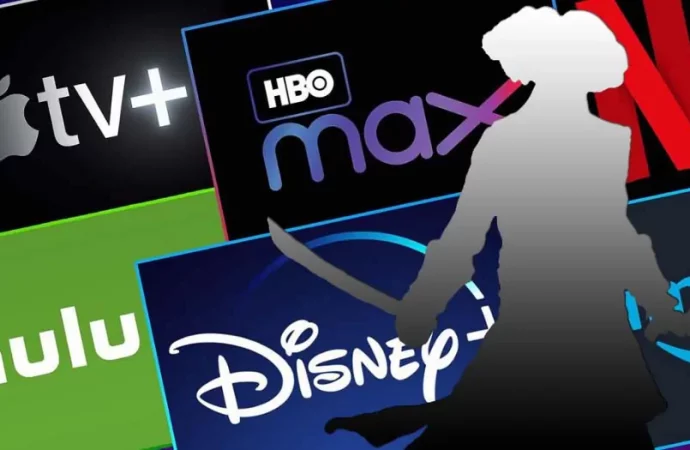Introduction In recent years, the entertainment landscape has undergone a seismic shift due to the phenomenon popularly known as the “Streaming Wars.” This term describes the intense competition among various streaming platforms such as Netflix, Amazon Prime Video, Disney+, HBO Max, and others, each vying for a dominant share of the global market. As these
Introduction
In recent years, the entertainment landscape has undergone a seismic shift due to the phenomenon popularly known as the “Streaming Wars.” This term describes the intense competition among various streaming platforms such as Netflix, Amazon Prime Video, Disney+, HBO Max, and others, each vying for a dominant share of the global market. As these platforms battle for subscribers, the impact on content creation has been profound and multifaceted. This article delves into the various ways the Streaming Wars have reshaped the content creation ecosystem.
Increased Investment in Original Content

Image by: Google.com
One of the most notable impacts of the Streaming Wars is the significant increase in investment in original content. To differentiate themselves from competitors, streaming platforms have poured billions of dollars into producing exclusive shows, movies, and documentaries. For instance, Netflix’s annual content budget has soared to over $17 billion, while Disney+ has earmarked substantial funds for its Marvel and Star Wars franchises.
This influx of capital has led to a golden age of television and film, with creators enjoying unprecedented freedom and resources to bring their visions to life. The diversity and quality of content available today are unparalleled, offering viewers a wide array of choices that cater to various tastes and preferences.
Diversification of Genres and Formats

Image by: Google.com
The Streaming Wars have also driven the diversification of genres and formats. Platforms are not just focusing on mainstream genres like drama and comedy but are also exploring niche markets. This has led to the creation of content that caters to specific audiences, such as sci-fi enthusiasts, horror aficionados, and documentary lovers.
Moreover, the flexibility of streaming platforms allows for experimentation with different formats. Anthology series, limited series, and interactive storytelling have gained popularity, providing creators with new ways to engage audiences. This diversification has enriched the content landscape, making it more inclusive and varied.
Globalization of Content

Image by: Google.com
Another significant impact of the Streaming Wars is the globalization of content. Streaming platforms are increasingly looking beyond their home markets to attract a global audience. This has led to the production and distribution of content from various cultures and languages, breaking down geographical barriers.
For example, Netflix’s success with shows like “Money Heist” (Spain), “Dark” (Germany), and “Sacred Games” (India) has demonstrated the potential of international content to gain worldwide popularity. This trend has encouraged creators from different parts of the world to produce content that can resonate with a global audience, fostering cross-cultural exchange and understanding.
Changing Dynamics of Talent Acquisition

Image by: Google.com
The competition among streaming platforms has also changed the dynamics of talent acquisition. To secure top-tier talent, platforms are offering lucrative deals to actors, directors, writers, and producers. High-profile creators like Shonda Rhimes, Ryan Murphy, and the Duffer Brothers have signed multi-million dollar contracts with streaming giants, ensuring a steady stream of high-quality content.
This talent war has elevated the status of content creators, giving them more bargaining power and creative control. As a result, we are witnessing a surge in innovative and boundary-pushing content that challenges traditional norms and conventions.
Impact on Traditional Media

Image by: Google.com
The rise of streaming platforms has had a profound impact on traditional media, including cable television and cinema. As more viewers shift to streaming, traditional media outlets are grappling with declining viewership and revenue. This has forced them to adapt by launching their own streaming services or partnering with existing platforms.
For instance, NBCUniversal launched Peacock, while WarnerMedia introduced HBO Max. These moves reflect the growing recognition that streaming is the future of content consumption. Traditional media companies are now investing in digital-first strategies to stay relevant in the evolving landscape.
Data-Driven Content Creation

Image by: Google.com
One of the unique advantages of streaming platforms is their ability to collect and analyze vast amounts of viewer data. This data-driven approach has revolutionized content creation, enabling platforms to tailor their offerings to audience preferences. Algorithms analyze viewing habits, search queries, and user feedback to identify trends and predict what content will resonate with viewers.
This has led to the creation of highly targeted content that aligns with audience interests. For example, Netflix’s recommendation engine plays a crucial role in driving viewership by suggesting content based on individual preferences. This data-driven approach not only enhances the viewer experience but also informs content creators about what works and what doesn’t.
Challenges and Criticisms

Image by: Google.com
While the Streaming Wars have brought numerous benefits, they are not without challenges and criticisms. The intense competition has led to an over saturation of content, making it difficult for viewers to navigate the vast array of options. Additionally, the pressure to produce a constant stream of new content can lead to burnout among creators and a decline in quality.
Moreover, the dominance of a few major players raises concerns about monopolistic practices and the marginalization of smaller, independent creators. There is also the issue of data privacy, as the extensive collection and analysis of viewer data raise ethical questions about user consent and data security.
Conclusion
The Streaming Wars have undeniably transformed the content creation landscape, ushering in an era of unprecedented creativity, diversity, and innovation. While the competition among streaming platforms has its challenges, the overall impact on content creation has been largely positive. As the battle for supremacy continues, it will be fascinating to see how the industry evolves and what new trends and innovations emerge in the years to come.
















